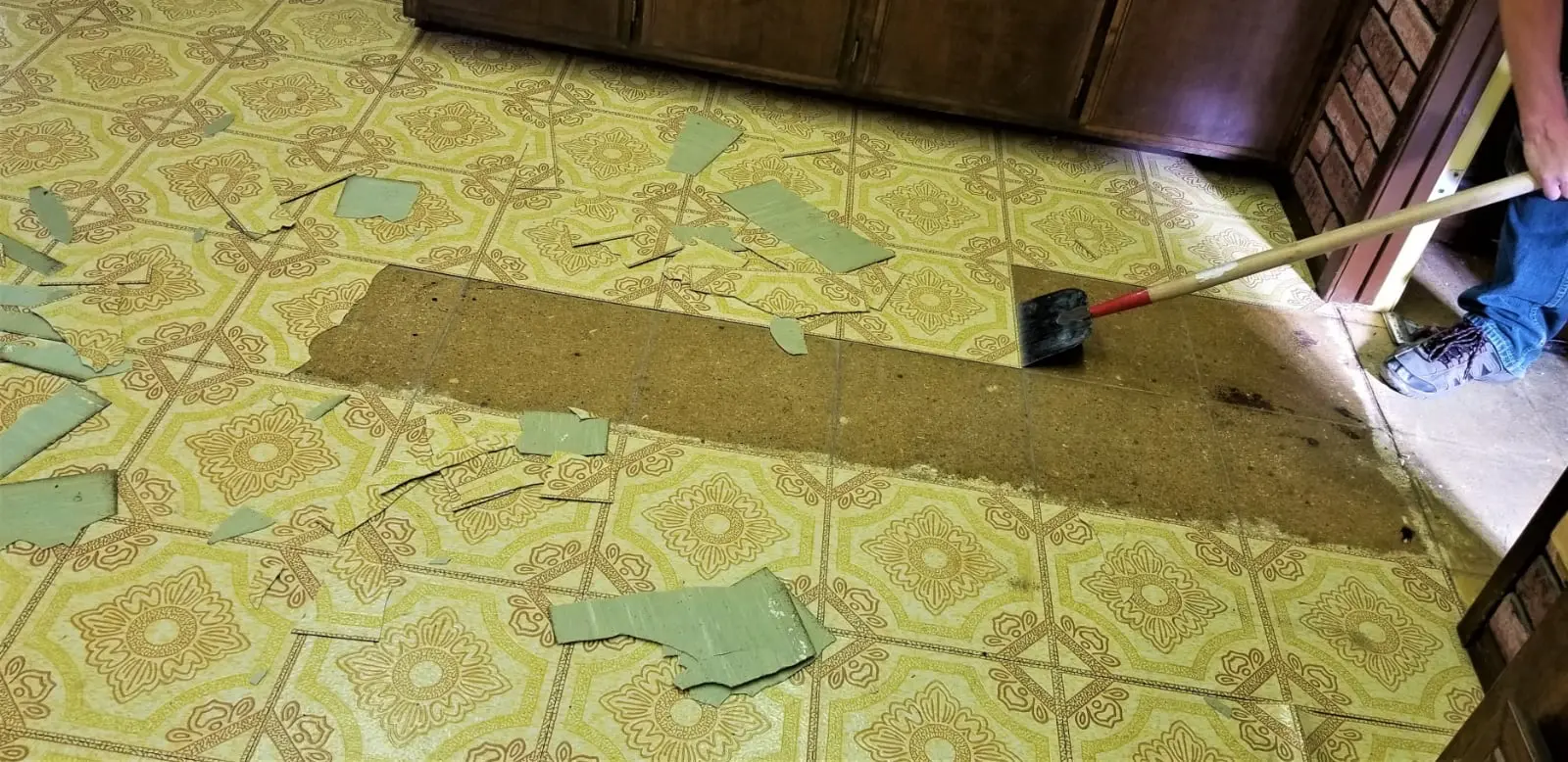Replacing Flooring in Older Homes: An Asbestos Advisory Guide for Victoria Homeowners
Are you considering upgrading the flooring in your cherished 1950s bungalow? Or perhaps your 1970’s duplex needs something a little more modern in the entryway. Before you dive into this exciting home improvement project, it’s crucial to be aware of some important factors, particularly if your home might contain asbestos. Houses built before 1980 often include materials with asbestos, including linoleum or vinyl flooring. Understanding the risks and your options will help ensure a safe and successful renovation.
What is Asbestos Made From?
Asbestos refers to a group of naturally occurring fibrous silicate minerals, including:
- Actinolite
- Amosite
- Anthophyllite
- Chrysotile
- Crocidolite
- Tremolite
These minerals are commonly found in certain types of rocks, such as altered ultramafic rocks, serpentinites, and mafic rocks. When these rocks are broken or crushed, asbestos fibers can be released into the air, posing a health risk.
Why on earth is there Asbestos in Flooring?
Before the health concerns were widely understood, asbestos was widely used in the flooring industry due to its strength, durability, and cost-effectiveness. It was commonly mixed into vinyl floor tiles and the backing of vinyl sheet flooring. This made it a popular choice for high-traffic areas like schools and hospitals. Even though Canada banned the use of asbestos in building materials in 1979, some products containing asbestos were still used in homes built into the early 1990s due to leftover inventories.

Tips to Help if There May Be Asbestos in Your Flooring
Identifying asbestos in flooring can be challenging, especially in older homes. Here are a couple of simple tips to help you determine if your flooring may contain asbestos:
First, consider the age of your home and flooring materials. Homes built before 1980 are more likely to have asbestos-containing materials. Look for clues like the type of flooring and its installation date. Vinyl tiles and sheet flooring from this era often used asbestos in their composition, particularly in the backing materials.
Another tip is to examine the flooring for any manufacturer labels or markings that might indicate the presence of asbestos. If you’re unsure, it’s best to err on the side of caution and assume it may contain asbestos. For a more definitive assessment, hire a professional to conduct testing. Certified asbestos inspectors can take samples and analyze them in a lab, providing you with accurate information about the presence of asbestos. Remember, if you suspect asbestos, avoid disturbing the flooring, as this can release harmful fibers into the air.

Local, Professional Asbestos Testing
Website: www.islandehs.ca Phone: 778-406-0933 Email: [email protected]
Here are two of the most common types of flooring that may contain asbestos which you might find in your older home. Understanding these types will help you make informed decisions and ensure your renovation project is both successful and contaminant free:
Linoleum
True linoleum, invented by Sir Frederick Walton, is made with linseed oil, resins, cork dust, and pigments, typically backed with burlap, jute, or canvas. True linoleum does not contain asbestos. However, some manufacturers produced similar-looking products with an asphalt-felt backing that contained asbestos. Because it can be difficult to distinguish true linoleum from these look-alikes, it is recommended that a professional comes to test before any removal has started.
Sheet Vinyl
Sheet vinyl has been popular due to its durability and variety. Modern sheet vinyl typically does not contain asbestos, as manufacturers now use safer materials like PVC (polyvinyl chloride) and fiberglass. However, older sheet vinyl may have asbestos in the backing, posing a risk during removal. Again, if there is any doubt, contact a professional.

Safely Dealing with Asbestos in Your Home
If you suspect your flooring contains asbestos, it’s crucial to handle it carefully to avoid disturbing the fibers. Here are your options:
- Leave it Undisturbed: If the flooring is in good condition and not damaged, the safest option might be to leave it undisturbed. Asbestos is most dangerous when its fibers become airborne.
- Professional Testing and Removal: Hire a professional to test your flooring for asbestos. If asbestos is found, a certified abatement contractor can safely remove it. This is especially important for larger projects or when the flooring is damaged.
- Covering the Flooring: In some cases, it may be possible to install new flooring over the old asbestos-containing flooring. This method can encapsulate the asbestos and prevent fibers from becoming airborne.
Now That You Know, What Next?
Renovating your home’s flooring can significantly enhance its beauty and functionality. However, for homeowners in Victoria, it’s important to consider the potential presence of asbestos in older homes. By understanding what asbestos is, recognizing the types of flooring that might contain it, and knowing how to handle it safely, you can protect your health and ensure a successful flooring project.
For professional advice and quality flooring options, trust United Floors in Victoria. We’re here to help you every step of the way.
